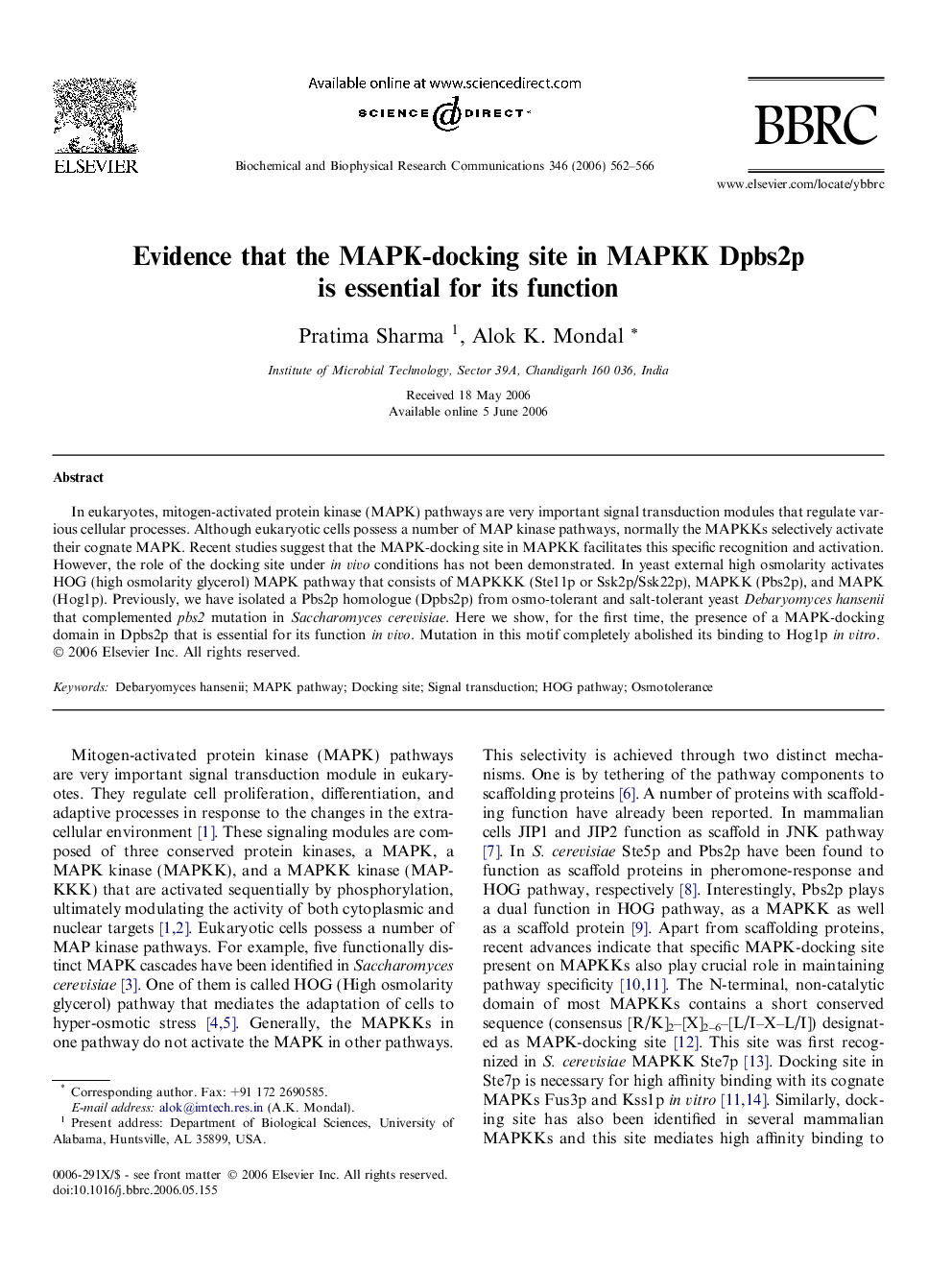| Article ID | Journal | Published Year | Pages | File Type |
|---|---|---|---|---|
| 1939422 | Biochemical and Biophysical Research Communications | 2006 | 5 Pages |
In eukaryotes, mitogen-activated protein kinase (MAPK) pathways are very important signal transduction modules that regulate various cellular processes. Although eukaryotic cells possess a number of MAP kinase pathways, normally the MAPKKs selectively activate their cognate MAPK. Recent studies suggest that the MAPK-docking site in MAPKK facilitates this specific recognition and activation. However, the role of the docking site under in vivo conditions has not been demonstrated. In yeast external high osmolarity activates HOG (high osmolarity glycerol) MAPK pathway that consists of MAPKKK (Ste11p or Ssk2p/Ssk22p), MAPKK (Pbs2p), and MAPK (Hog1p). Previously, we have isolated a Pbs2p homologue (Dpbs2p) from osmo-tolerant and salt-tolerant yeast Debaryomyces hansenii that complemented pbs2 mutation in Saccharomyces cerevisiae. Here we show, for the first time, the presence of a MAPK-docking domain in Dpbs2p that is essential for its function in vivo. Mutation in this motif completely abolished its binding to Hog1p in vitro.
